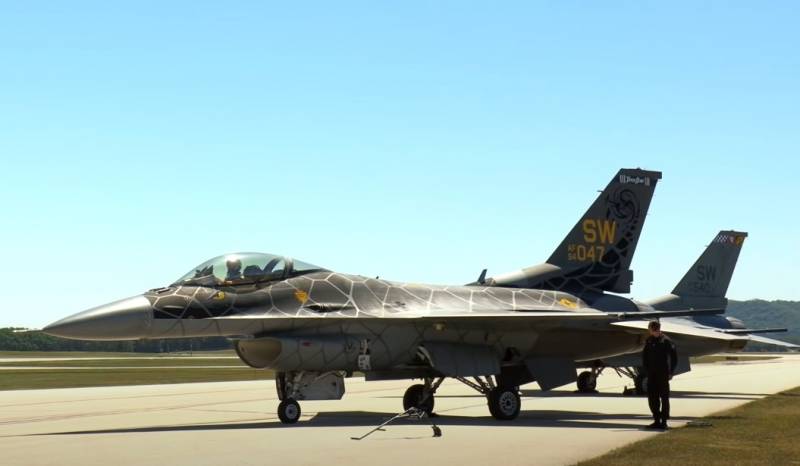An American officer spoke about the F-16C Block 50 fighter, capable of taking off at a speed of 120 km / h
The F-16 is one of the main fighters of the United States, its allies and partners. In total, over 4600 machines were produced, the users of which were 30 countries. To represent the capabilities of the aircraft in the US Air Force, a demonstration team Viper was created. It includes an F-16C Block 50 fighter, nicknamed Venom after the anti-hero from the Marvel universe.
Major Garrett Schmitz spoke about this fighter for The Aviationist. As he explained, for the purpose of performing demonstration flights, this aircraft has a non-standard configuration compared to the F-16 with the usual loading of fuel tanks and a set of weapons, as well as a special engine with increased thrust, which, as indicated, turns it into a "sport" version of the fighter. . In particular, these differences make it possible to take off at a speed of 120-130 km / h instead of 156 km / h and switch to supersonic flight without using afterburner.
- indicates an American officer.
As explained, even in the event of an engine failure, the aircraft can continue to fly due to the presence of an EPU emergency power unit running on hydrazine.
- noted in the press.
Schmitz explained why MRLS launchers are permanently located at the ends of the F-16's wings: they provide stability to the aircraft, which increases when they are loaded with missiles. Without MRLS, wing resonance is possible, which would lead to flight speed limitations.
This version of the American fighter has significantly greater maneuverability than the classic F-16 variants.

Information